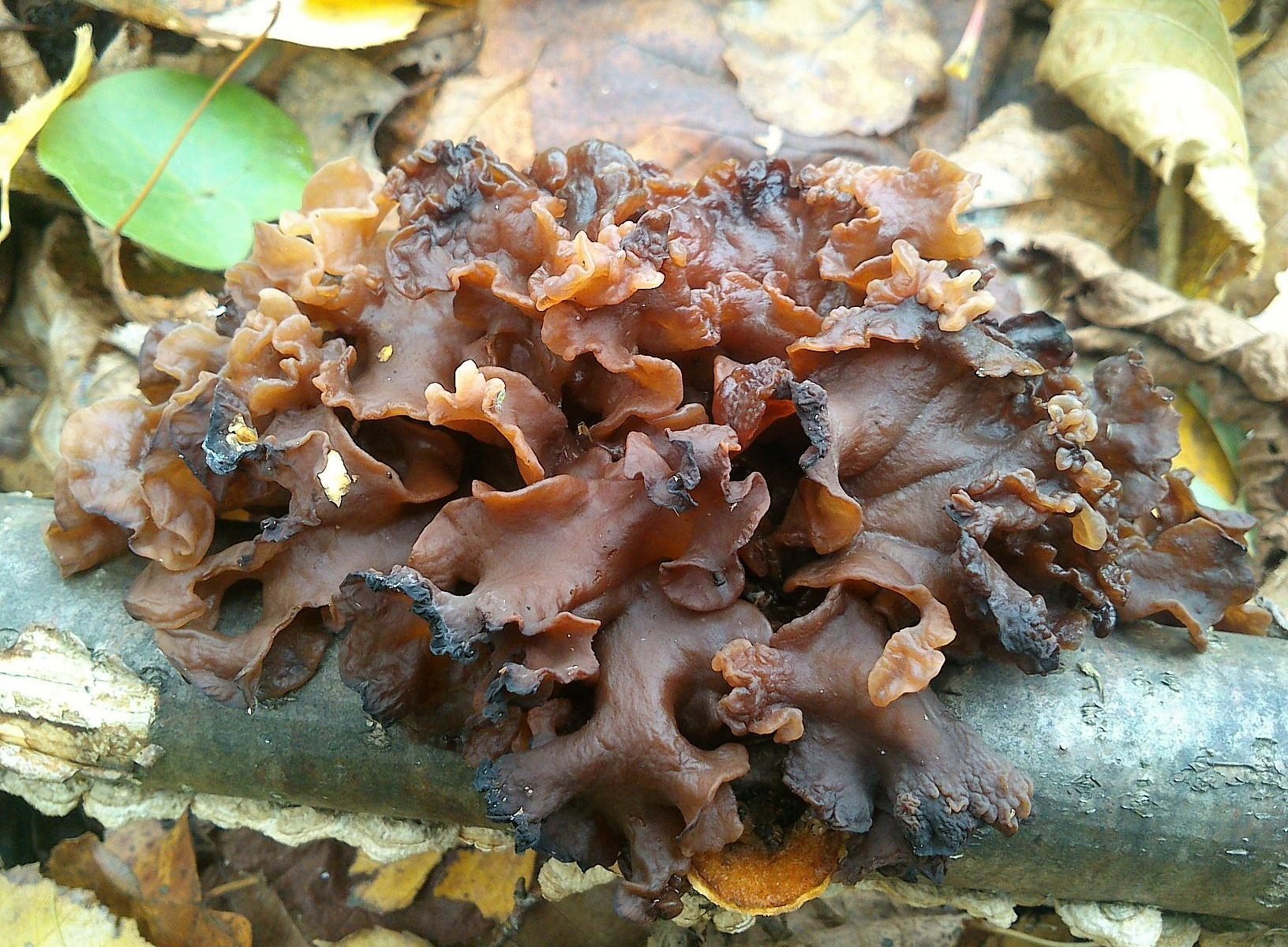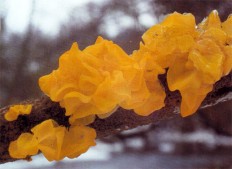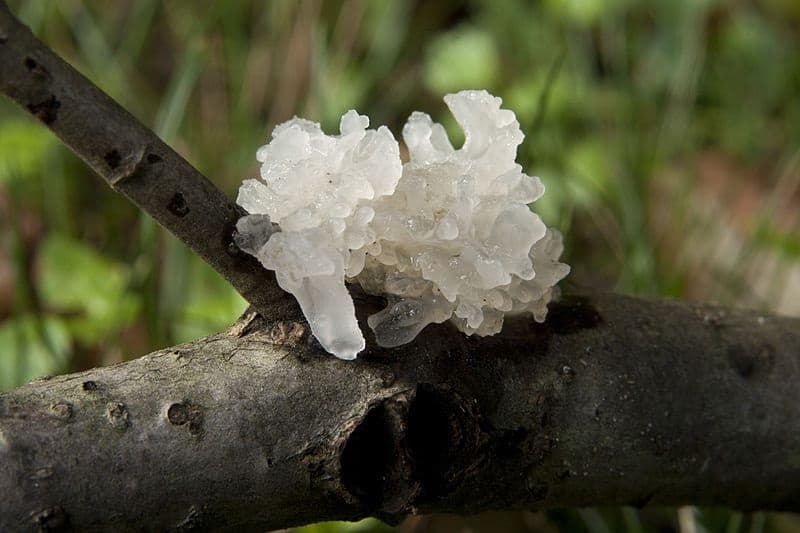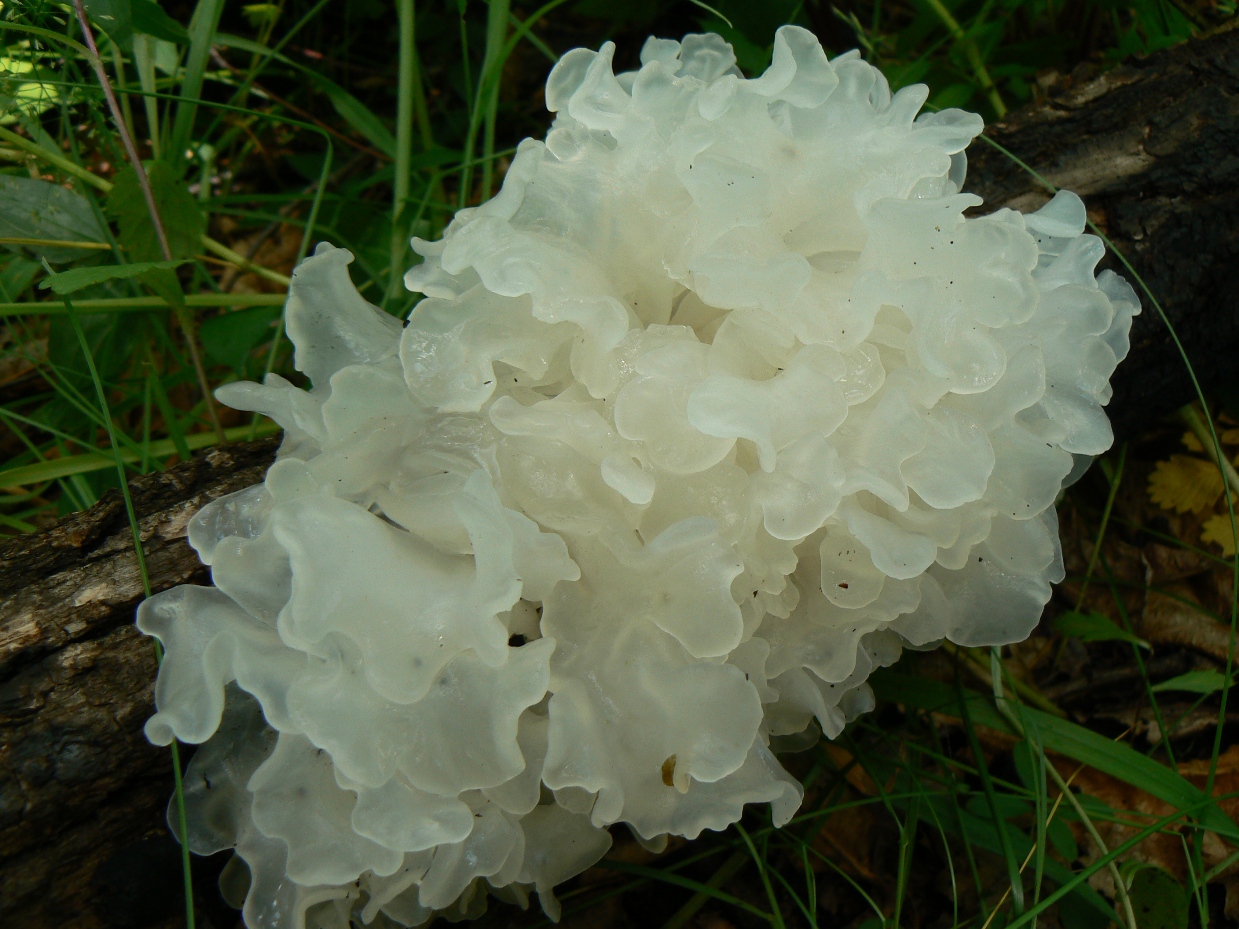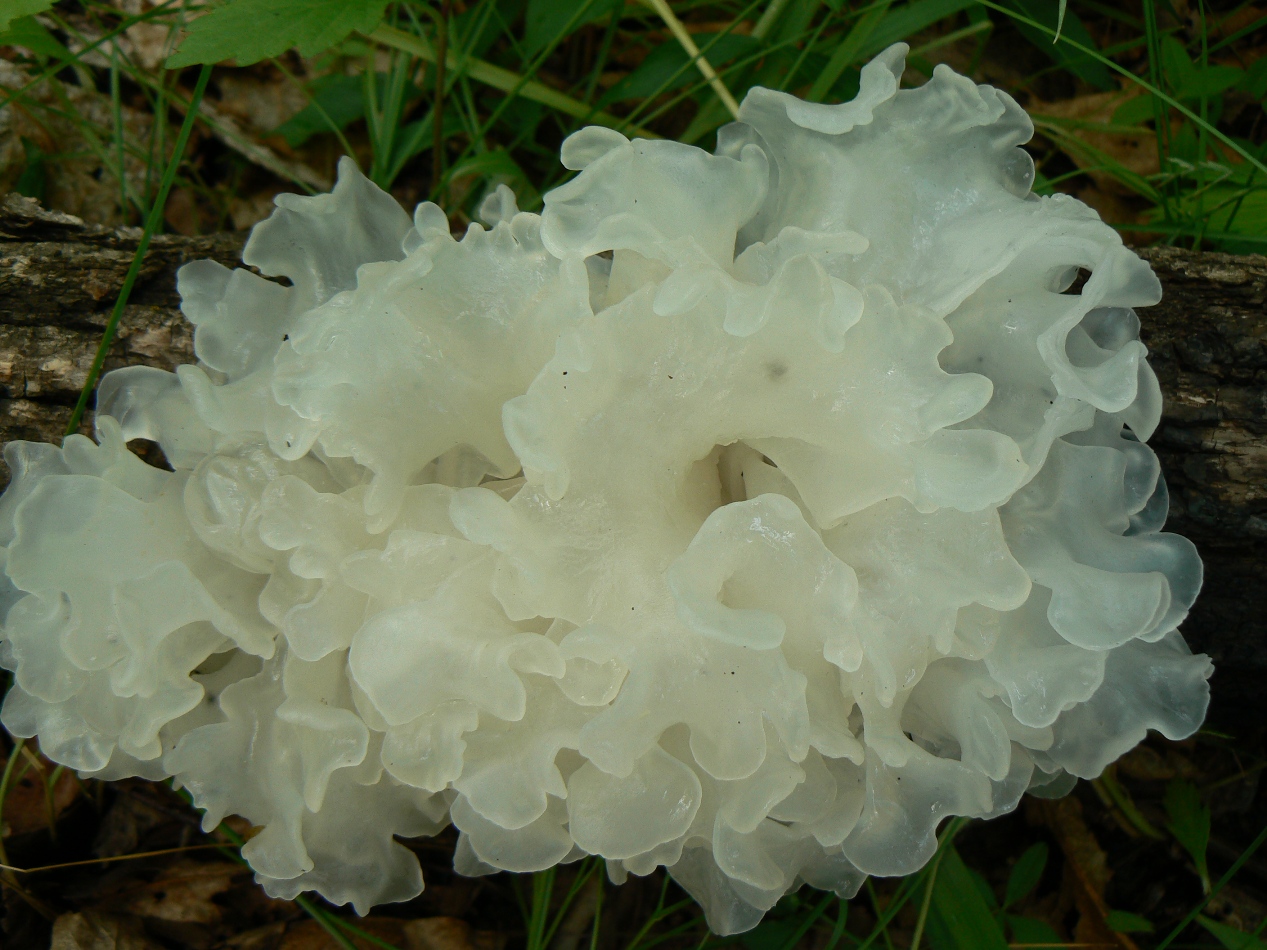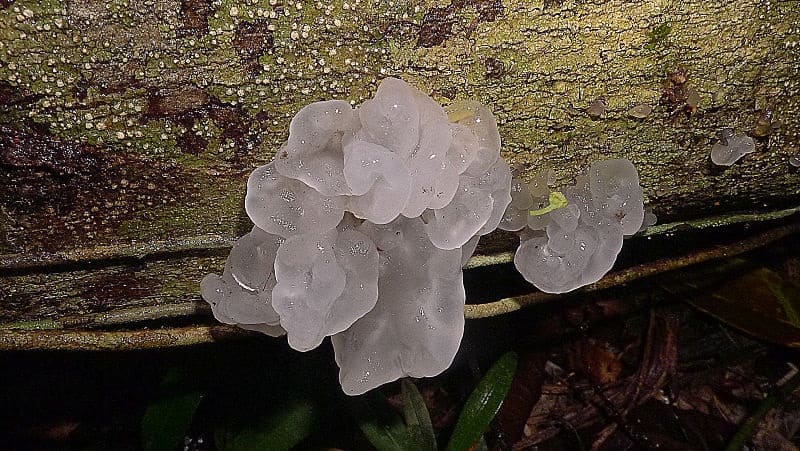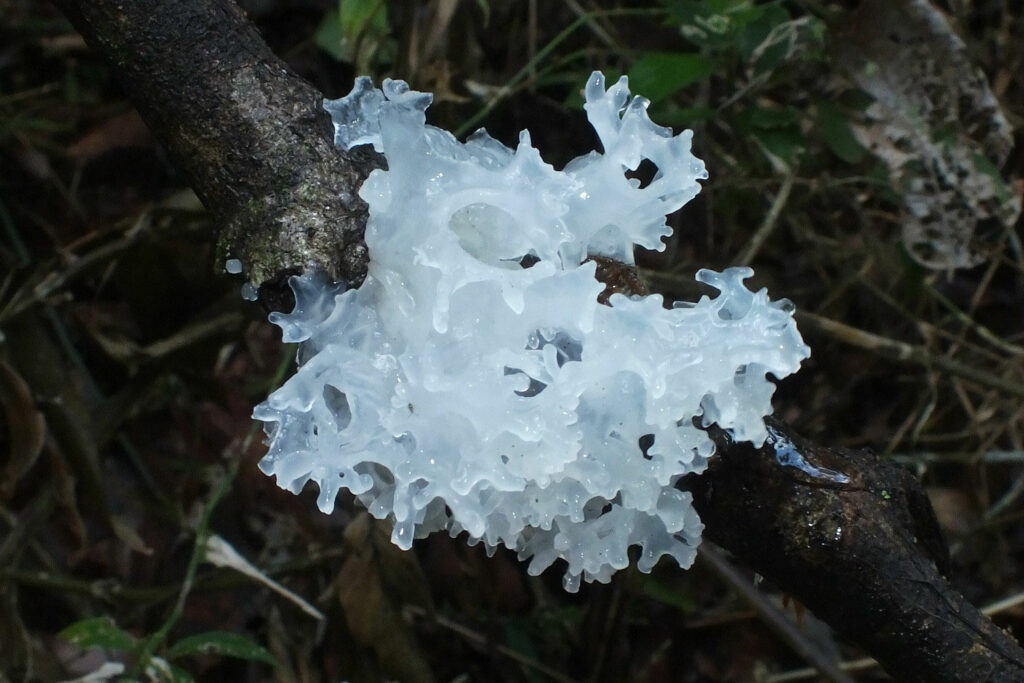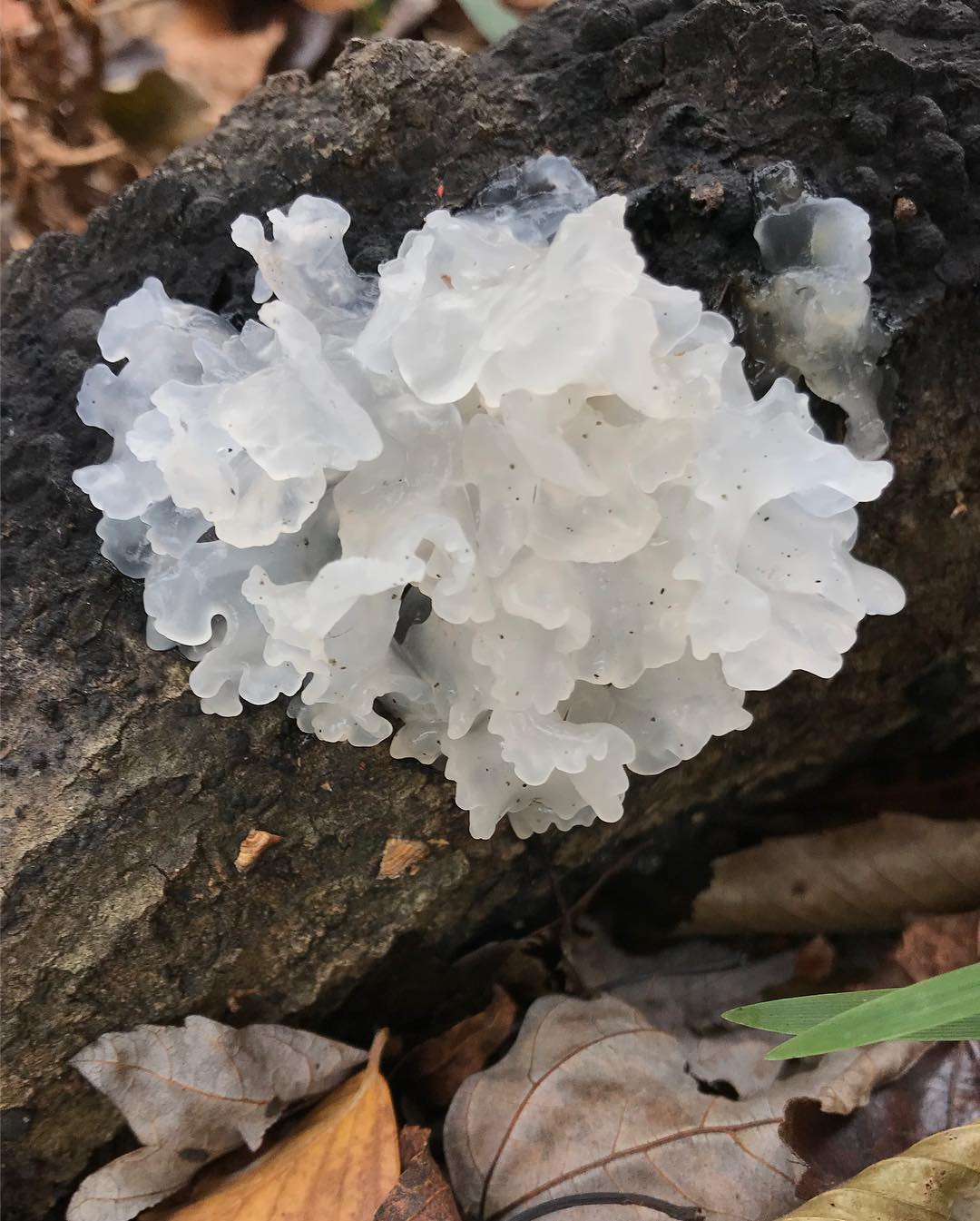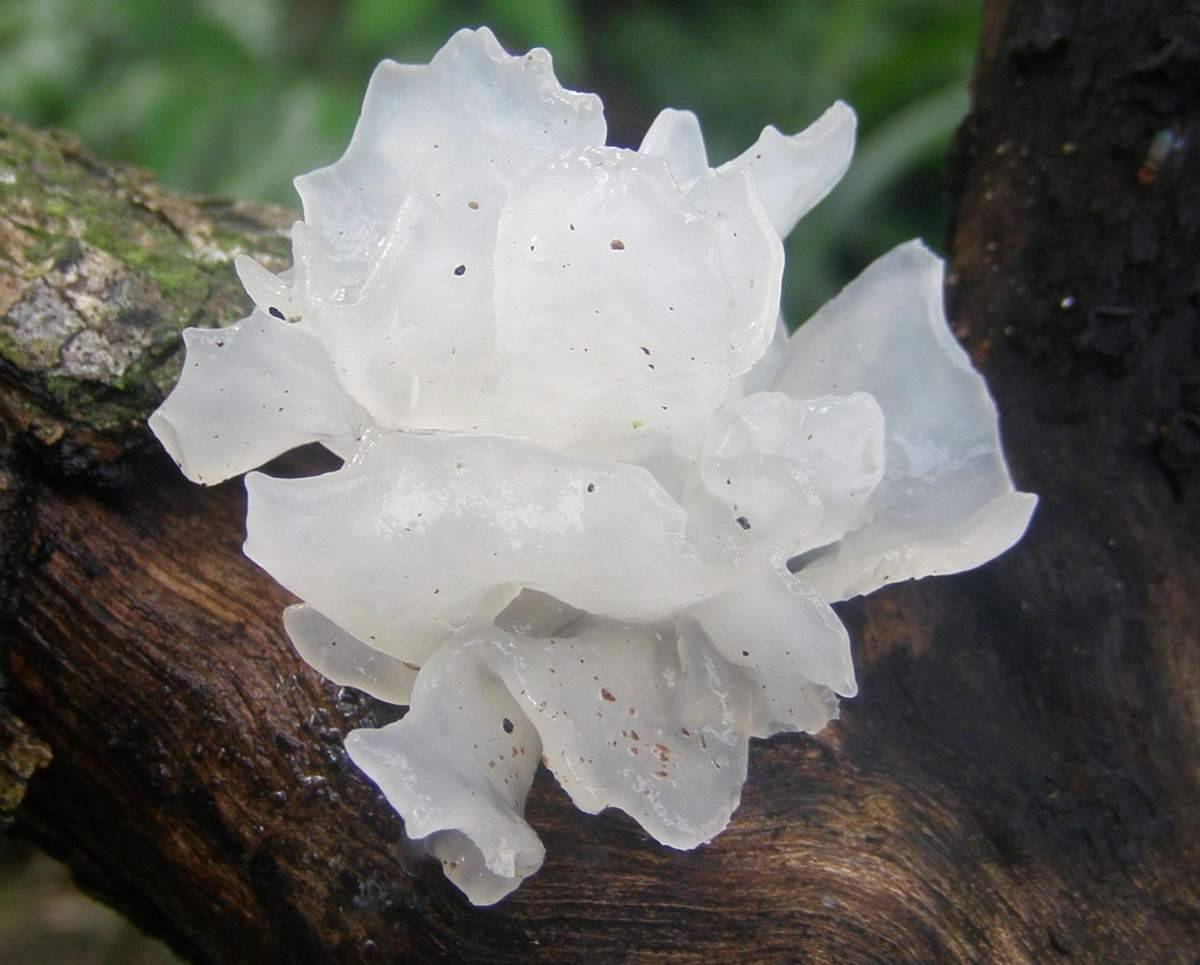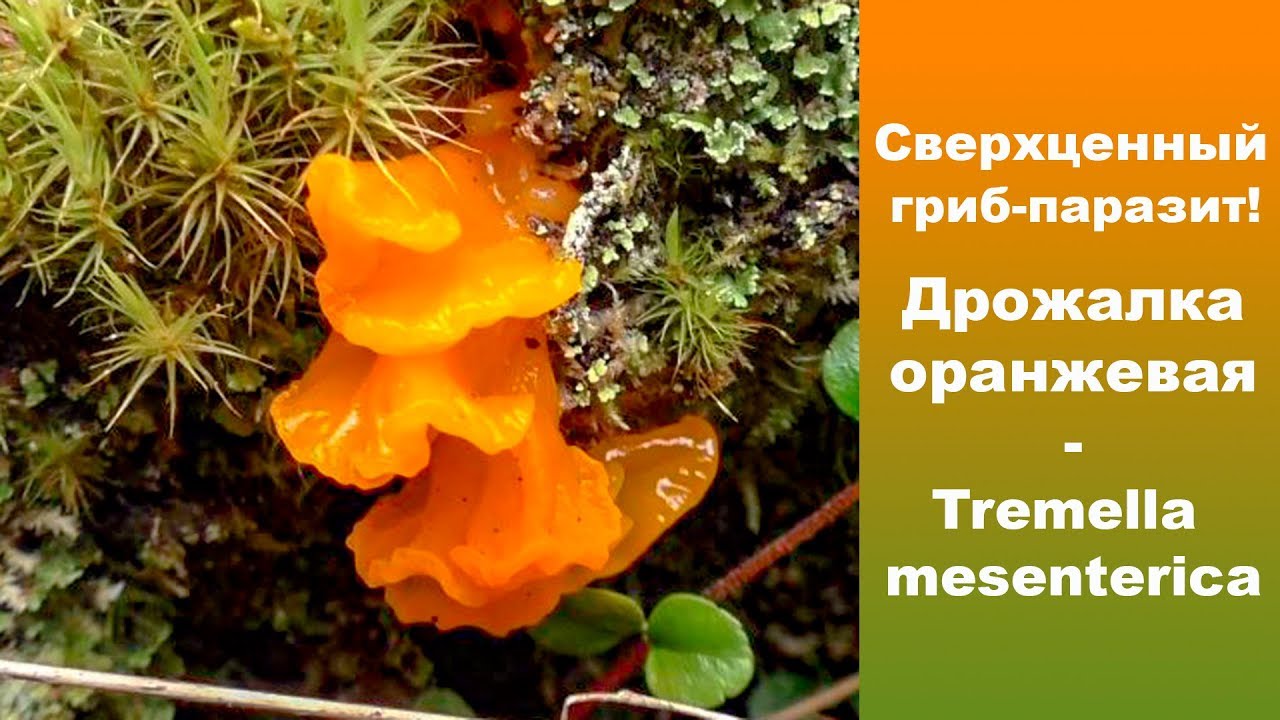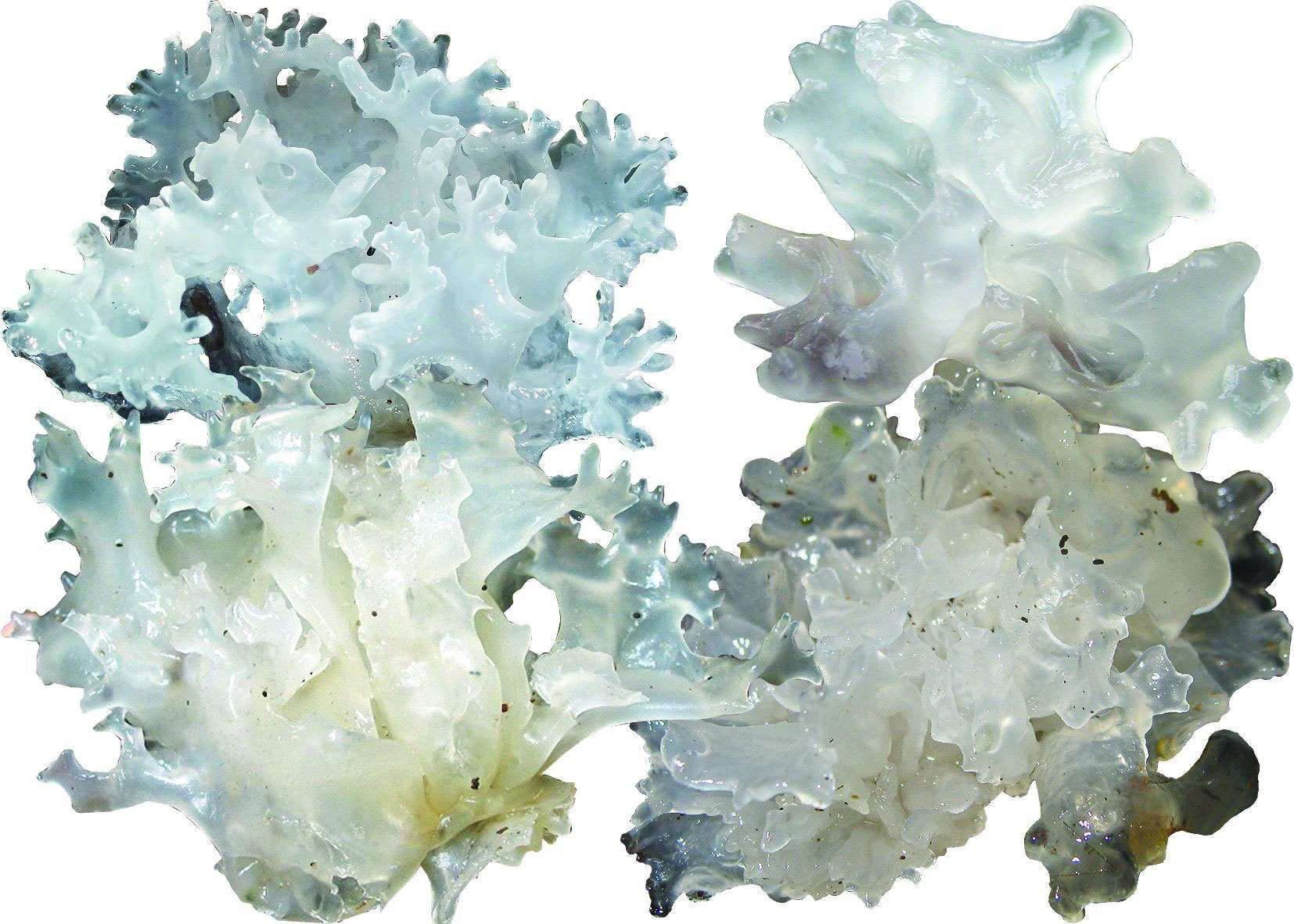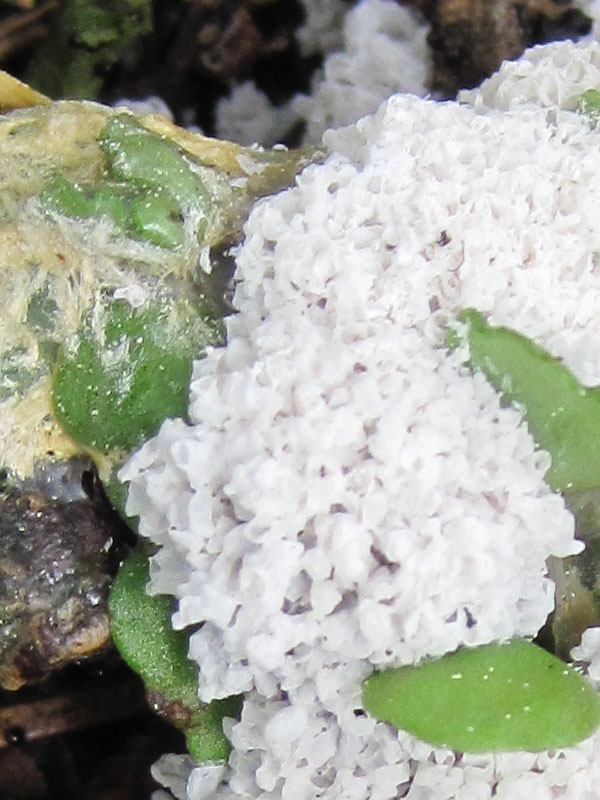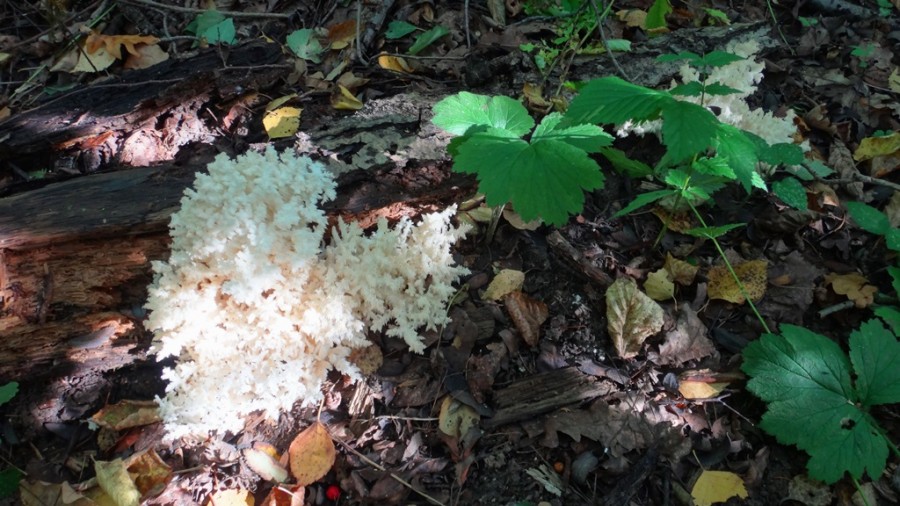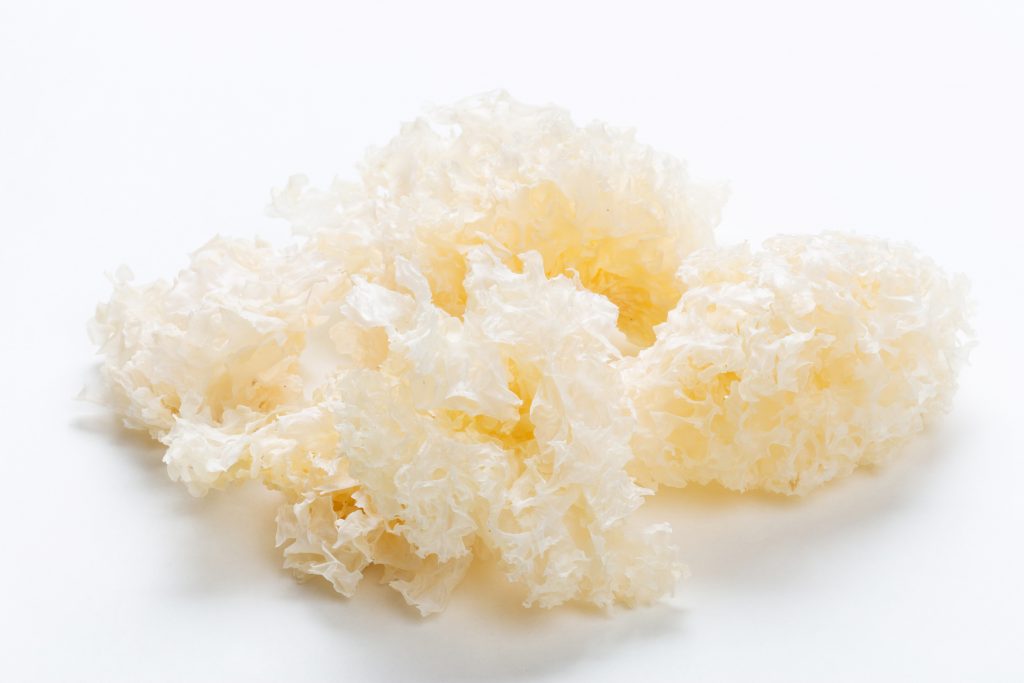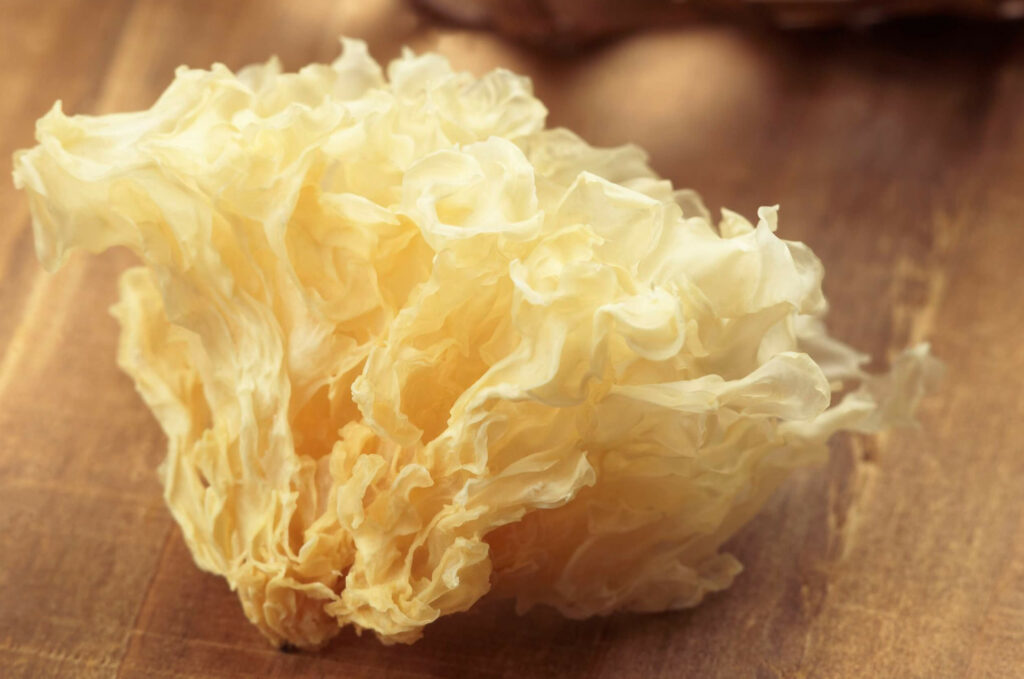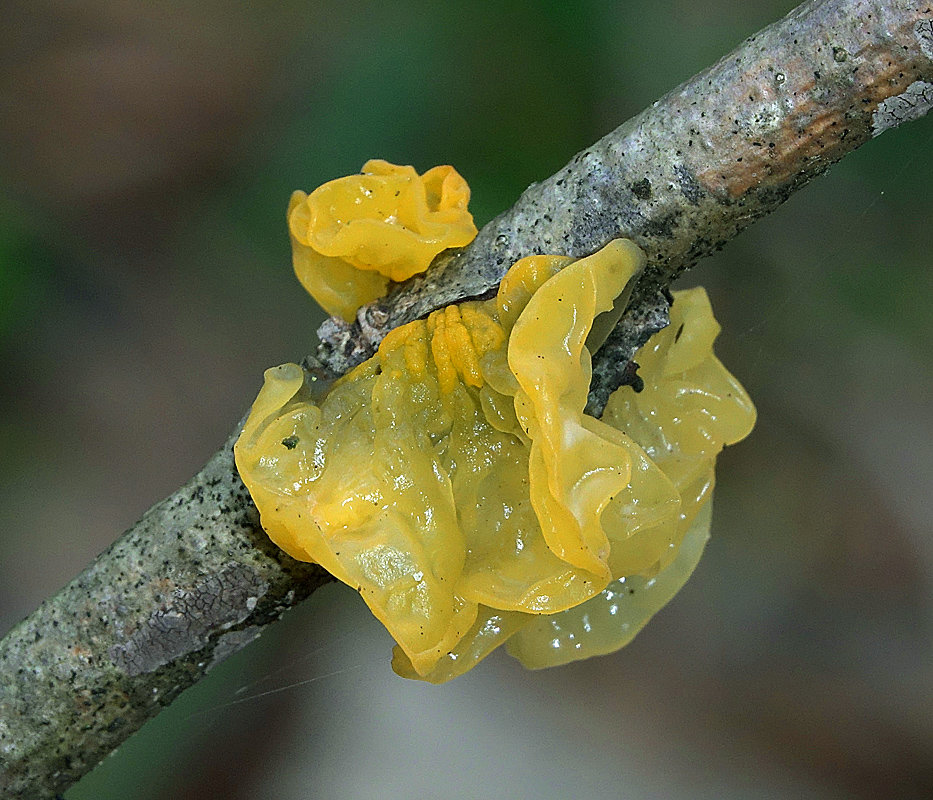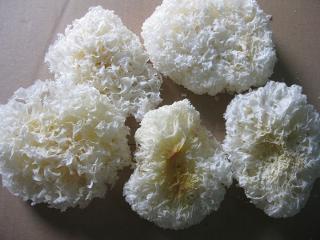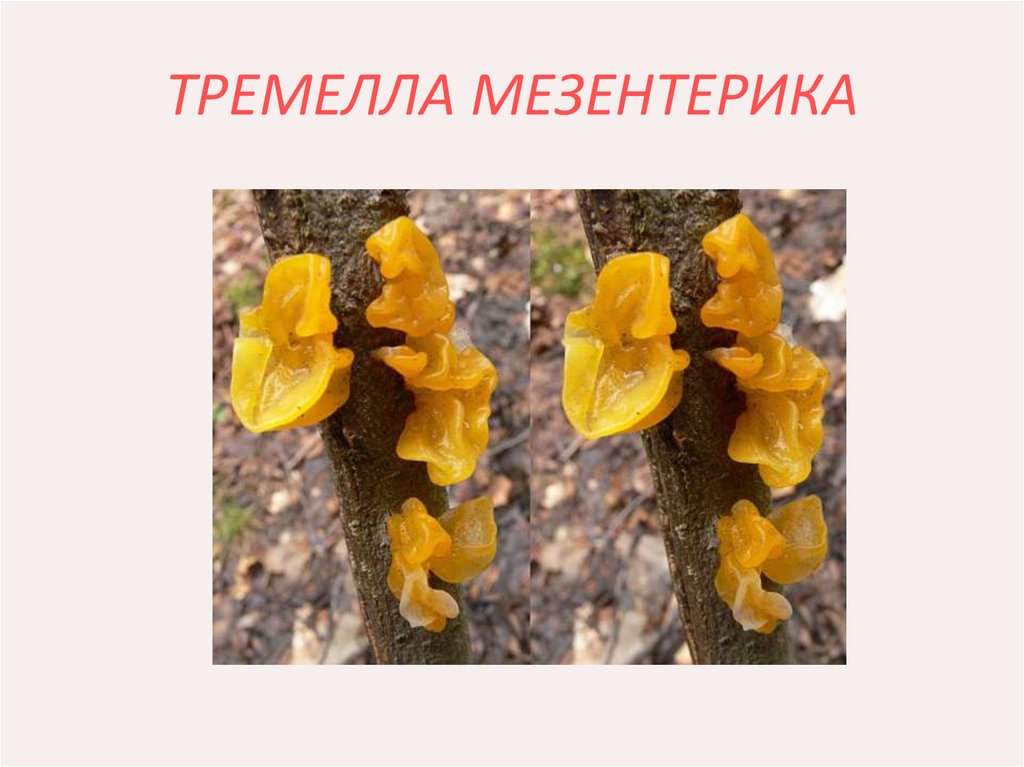Use in cosmetology
Cosmetologists consider practical use as useful properties and use it as a means that moisturizes the skin and can make it soft and elastic.
Natural polysaccharides easily penetrate into the deep layers of the epidermis and have a rejuvenating effect from the inside, retaining moisture in the cells.
Irina Selyutina (Biologist):
The acidic polysaccharide extracted from the fruit bodies of the tremella is similar in its physical and chemical characteristics to hyaluronic acid. Its excellent moisturizing effect, as well as its high water retention capacity, have been extremely appreciated by detox product companies for regular use in urban and dry air environments.
Fucus tremella has the only strict contraindication - individual hypersensitivity to this product. Tremella is introduced into the composition of anti-age and anti-stress products for the skin, and now also in hair protection products. The optimal working concentration of a component in the finished product is considered to be in the range of 0.02-0.5%.
The tremella extract used in cosmetology is stored exclusively in powder form.
Description of the orange shiver (filmy), the spread of the fungus
Some of the common domestic mushrooms can be difficult to suspect of edibility and usefulness - their appearance is very unusual. Shiny and bright orange shiver is one such species.
Description
The edible orange mushroom (Tremella mesenterica) has the synonymous names Tremella filmy, dredge and tremor filmy. This unusual species is distinguished by the following features:

- the fruiting body is formed by shiny translucent sinuous lobes fused at the base. Their color can be bright yellow, orange, sometimes light, almost white. The total height of a group of intergrowths is 1-4 cm. In dry weather, the blades shrink, their color darkens. With sufficient moisture, the volume and color are restored, and after prolonged rains, the blades become completely light. Old mushrooms acquire a rough texture and darken strongly;
- white spores form on the entire surface of the fungus, giving a whitish tint to mature specimens;
- the pulp is gelatinous, but firm, or dry, with a weak pleasant delicate odor.
Places of distribution and period of fruiting
Orange shiver is a common mushroom that is often found in Russian forests, in mountainous and lowland areas. It parasitizes on tinder fungus of the genus Peniophora, inhabiting damaged and decaying deciduous wood, and occasionally coniferous wood. Together with these hosts, a mass of orange blades appears on branches, trunks, stumps and stacks of firewood, forming more or less numerous groups.

Fruit bodies grow from August to May (freezing in winter, continues to develop during thaws).
Similar types and differences from them
Despite its peculiar appearance, the orange shiver has a relative similar to it. The inedible shiver (Tremella foliacea) is also a conglomeration of rather fleshy blades and settles on deciduous wood. It is distinguished by its brown color.
Primary processing and preparation
Orange tremors are edible; fresh they are added to salads. Most often, their fresh or dried fruit bodies are used for making broths. These mushrooms are especially appreciated in China, where they make exotic cold soups that strengthen the immune system.
Medicinal properties
The polysaccharide compound glucuronoxylomannan was obtained from orange tremors. This substance stops inflammatory processes, it is effective in the treatment of diabetes and allergies, is an immunomodulator, hepato- and radioprotector.
The fruiting bodies of this mushroom contain B vitamins, as well as essential amino acids, which makes them very nutritious in terms of nutrition. Alcohol extract of fresh fruit bodies of an unusual fungus has antitumor activity.
Translucent clusters of orange tremors are easy to find in autumn. Their nutritional and healing properties, widely known in China, have yet to be appreciated by most of the domestic mushroom pickers.
Notes (edit)
- ↑ 123Chen C-J. Morphological and molecular studies in the genusTremella ... - Berlin: J. Cramer, 1998. - P. 225. - ISBN 3-443-59076-4.
- Roberts P, de Meijer AAR. (1997). “Macromycetes from the state of Paraná, Brazil. 6. Sirobasidiaceae & Tremellaceae ”. Mycotaxon .64 : 261—283.
- Hsieh, Huei-Mei; Ju, Yu-Ming; Rogers, Jack D. (July – August 2005). Natvig, Don, ed. "Molecular phylogeny of Hypoxylon and closely related genera". Mycologia ... Lawrence, Kansas, USA: The Mycological Society of America.97 (4): 844-865. DOI: 10.3852 / mycologia.97.4.844. ISSN 1557-2536. PMID 16457354. Print ISSN: 0027-5514. Retrieved 31 January 2012.
- Lowy B. Flora Neotropica 6: Tremellales. - New York: Hafner, 1971. - ISBN 0-89327-220-5.
- Australian Fungi Checklist ア ー カ イ ブ さ れ た コ ピ ー. Retrieved June 10, 2010. Archived March 18, 2011.
- New Zealand Fungi Checklist https://nzfungi.landcareresearch.co.nz/html/data.asp?ID=&NAMEPKey=11470
- Olive LS. (1958). “The lower Basidiomycetes of Tahiti (continued)”. Bulletin of the Torrey Botanical Club .85 (2): 89-110. DOI: 10.2307 / 2483023. JSTOR 2483023.
- Hemmes DE, Desjardin DE. Mushrooms of Hawai'i: an identification guide. - Ten Speed Press, 2002 .-- ISBN 1-58008-339-0.
Time and place of fruiting
He loves a warm tropical climate, in India and China he lives among fallen trees. Until the trunk is completely dry, the white quiver settles on the moss bark and feeds on the remaining minerals. Often chooses mango and banana trees. Since the climate in these countries is constant and warm, it bears fruit all year round.
In Russia, the mushroom can be found in Primorye and Sochi. However, due to the instability of the climate, the tremor bears fruit and appears only in the hot summer time: from June to mid-September. Since mango does not grow in Russia, fucus tremella prefers oak thickets.
The use of jellyfish mushroom for medicinal purposes
Containing many polysaccharides and other useful components, Fucus-like tremor has the following medicinal qualities:
- Strengthens the immune system.
- Protects the stomach and intestines from inflammation by covering them with a mucoid film, and promotes the development of probiotics that improve the intestinal microflora.
- Helps to reduce weight with a mild laxative effect.
- Protects the body from radiation and oncology: artificially grown mycelium is used in the production of Tremellastine, an antineoplastic agent.
- It has a beneficial effect on the brain, lungs, liver, kidneys and heart, prevents the development of diabetes and allergies.
- Heal festering wounds and relieve trophic ulcers.
- They prevent the development of atherosclerosis and deal with cholesterol plaques.
Leafy shiver (Phaeotremella foliacea)
Photo by K.Yu. Sinelnikov.
Synonyms: Trembling fringed Tremella foliacea Gyraria foliacea Naematelia foliacea Ulocolla foliacea Exidia foliacea
Taxonomy: Division: Basidiomycota (Basidiomycetes) Subdivision: Agaricomycotina (Agaricomycetes) Class: Tremellomycetes (Tremellomycetes) Subclass: Tremellomycetidae (Tremellomycetidae) Order: Tremellales (Pharyocephalaceae) Family: Tremeeotremella leafy)
Fruit body: 5-15 centimeters and more, the shape is varied, it can be correct, from spherical to cushion-shaped, it can be irregular, depending on the growth conditions. The body of the fungus consists of a mass of leaf-like formations that have grown together with a common base; in young specimens, until they have lost their elasticity, they give the impression of “ruffled” thin combs.
The surface is oily-moist in wet weather, in dry periods it remains wet for a long time, when dry, individual petals wrinkle in different ways, so that the shape of the fruit body is constantly changing.
Color: brownish, maroon to cinnamon brown, darker in age. When dry, they can acquire a light purple tint, later darken to almost black.
Flesh: translucent, gelatinous, firm. With the aging of the fruiting body in wet weather, the “petals” from which the mushroom is formed lose their elasticity and shape, and in dry weather they become fragile.
Odor and Taste: No particular taste or smell, sometimes described as “mild”.
The spore-bearing layer is located over the entire surface. Spores: 7-8.5 x 6-8.5 microns, subglobose to oval, smooth, non-amyloid. Spore powder: cream to pale yellowish.
The leaf tremor parasitizes other fungi of the Stereum species growing on conifers, for example, Stereum sanguinolentum (Reddening Stereum). Therefore, Phaeotremella foliacea can only be found on conifers (stumps, large valezha).
Season and distribution Widespread in Eurasia, America.The fungus can be found in different seasons of the year in varying degrees of growth or dying, since the fruiting bodies persist for a long time.
The mushroom is probably not poisonous, but its taste is so low that the question of preparation is not particularly considered.
It is a deciduous tremor that lives exclusively on deciduous species, as it parasitizes types of stereums attached to deciduous species.
Auricularia auricular (Judas ear) is distinguished by the shape of fruit chalk.
Sparassis crispa, which has a much firmer texture, is yellowish brown rather than brown, and usually grows at the base of conifers rather than directly on the wood.
Note: a bit of history
The taxonomy of the Phaeotremella foliacea group is being revised based on morphological, ecological, geographic and DNA data. The name P. foliacea is reserved for the gymnosperm species associated with Stereum sanguinolentum in Eurasia and North America. Tremella neofoliacea and Cryptococcus skinneri are considered synonymous with P. foliacea s.str. The other three species in the complex are inhabited by deciduous trees. Of these, Phaeotremella fimbriata, comb. nov. *, associated with Stereum rugosum; this species has a blackening of basidiocarps and small basidiospores, found in Europe. Its close relative is the East Asian Phaeotremella eugeniae, sp. nov., is associated with the Mongolian oak (Quercus mongolica) and has larger basidiospores. The third species, Phaeotremella frondosa, comb. nov., produces the largest basidiospores in the genus and is associated with either S. rugosum (mainly in Northern Europe) or other Stereum species (temperate Eurasia and North America). In addition, T. nigrescens is typed and synonymous with P. frondosa, and two species, T. fuscosuccinea and T. roseotincta, are combined with Phaeotremella.
* - comb. nov. (abbreviated from Lat. Combinatio nova) - a new combination, that is, a combination formed from a previously promulgated legal name
** - sp. nov. (abbreviated from Lat. Species nova) - a new species. The phrase is used after the binomial name, which is published for the first time.
Head of the plant protection laboratory of AIC "Vitus" Sinelnikov K. Yu.
Specialists of the plant protection department of AIC "Vitus" carry out entomological and phytopathological examination of green spaces, develop individual plans for plant protection measures, treat green spaces with protective agents and carry out complex plant care.
Ice mushroom: benefits and medicinal properties
Modern research has confirmed that it is not in vain that tremella has been used for centuries in traditional medicine in the countries of the East. In oriental medicine, shiver is used as an anti-allergic, anti-inflammatory, antineoplastic, stimulating, tonic and cholesterol-lowering agent. It is also effective in the fight against pulmonary diseases, in particular, against tuberculosis. Fucus tremella is used to improve the functioning of the stomach, heart, brain, kidneys, liver. And also it is able to protect against radiation, improve the processes of hematopoiesis and stabilize high blood pressure.
Tremella also contains a substance that can prevent leukopenia (a drop in the number of leukocytes) in people undergoing chemotherapy and radiotherapy, and quickly restore bone marrow health. In addition, shiver white extract kills cancer cells in the cervix and certain types of other tumors.
In addition to being used in medicine, the coral mushroom is also used in cosmetology. Thanks to its high content of vitamin D, it is able to rejuvenate the skin and even smooth out wrinkles! But, despite the usefulness of this mushroom, you need to be careful with it during pregnancy and lactation, and it is better to completely abandon it. It should not be given to children and should not be consumed if you are prescribed anticoagulants.
You have probably tried or at least met an unusual dish on sale - Korean-style corals.In fact, the basis of this dish is not at all corals, but a specific variety of translucent porcini mushrooms, similar to snow balls.
Most often, these mushrooms are called coral. But they also have a lot of alternative names: ice mushroom, snow mushroom, king mushroom, gelatinous mushroom. The scientific name is tremella fuciformis.
The size of most coral mushrooms found in the wild can be compared to a golf ball. The mushroom has several wonderful lace branches. At high humidity, it becomes slippery, jelly-like texture.
The coral mushroom grows mainly in the subtropics on various trees, from which it receives all the necessary nutrients. Although it was previously believed that these snowballs get their food directly from the forest soil.
The English mycologist Miles Joseph Berkeley discovered and first described coral mushrooms in 1856. Nevertheless, in the Asian world, ice mushrooms were eaten even before that. Asian herbalists sold these mushrooms as a miracle cure for colds and dry coughs, as a rejuvenator and tonic.
The name, which is obtained by transliterating the Chinese characters, sounds like “silver ear”, “snow ear” or “white tree ear” (Bai Mu Er, Yin Er), and the Japanese version is “white tree jellyfish” (Shirokikurage, Hakumokuji).
The use of jellyfish mushroom for medicinal purposes
Containing many polysaccharides and other useful components, Fucus-like tremor has the following medicinal qualities:
- Strengthens the immune system.
- Protects the stomach and intestines from inflammation by covering them with a mucoid film, and promotes the development of probiotics that improve the intestinal microflora.
- Helps to reduce weight with a mild laxative effect.
- Protects the body from radiation and oncology: artificially grown mycelium is used in the production of Tremellastine, an antineoplastic agent.
- It has a beneficial effect on the brain, lungs, liver, kidneys and heart, prevents the development of diabetes and allergies.
- Heal festering wounds and relieve trophic ulcers.
- They prevent the development of atherosclerosis and deal with cholesterol plaques.
Geography of distribution
The geography of distribution covers the areas where the fungus grows, on which the tremella parasitizes - this is Archer's annulohypoxylon (saprotrophic fungus) or it will be old fallen branches and trunks of dead large-leaved trees, more often - ordinary Indian mango. Grows singly or in small colonies.
The natural habitat includes tropical and subtropical regions, including Asian countries, the Australian continent, Central America, the Pacific Islands and New Zealand.
For culinary purposes, fucus tremella is grown artificially.
Practical use
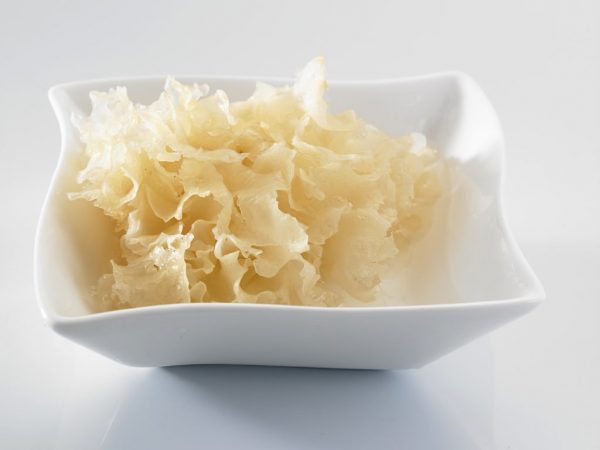
The mushroom is used in cooking and cosmetology
The industrial cultivation of this species in China began in the 19th century. Tremella is used to prepare traditional Chinese soup, drinks, it acts as an ingredient for sweet desserts, including ice cream.
The benefits of the mushroom:
- enhances immunity;
- increases the body's resistance to radiation, accelerates recovery processes, shortening the rehabilitation period after chemotherapy;
- normalizes the respiratory system;
- stabilizes the activity of the heart and blood vessels, improves the functioning of the hematopoietic organs, strengthening the micromuscular tone, preventing the deposition of cholesterol on the walls of blood vessels;
- prevents the development of thromfolebitis and varicose veins, harmonizes blood clotting processes;
- prevents the increase in blood sugar levels;
- acts as an anti-allergenic agent;
- improves the activity of internal organs, including the spleen, gastrointestinal tract, stimulating the outflow of bile and increasing the rate of intestinal motility.
In cosmetology, mushroom pulp is a remedy for wrinkles, it is used in the form of anti-aging masks and as part of decorative cosmetics.
Contraindications
Fucus tremella can harm the health of young children under 3 years of age, pregnant and lactating women.
It is not recommended to use it simultaneously with drugs that reduce blood clotting (anticoagulants).
Ice mushroom - Tremelodon gelatinous - Pseudohydnum gelatinosum
The most powerful cure for the most serious diseases - the coral mushroom grows in our forests.
Woody korean porcini mushroom
Description and distribution of ice mushroom (fucus tremella)
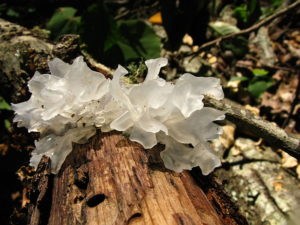
This representative of the mushroom kingdom is known, perhaps, to every lover of Asian cuisine - it is the Chinese and Japanese who consider it a real delicacy. But ice mushroom or fucus tremella is also used in medicine - due to its medicinal properties, the species is highly valued by the inhabitants of the East. What does this mushroom look like, where does it grow and what properties does it have?
Description
Tremella fuciformis (Tremella fuciformis) or white tremor is an edible species of mushrooms of the Drozhalkovye family, of the Drozhalka genus. It was first described in 1856 by the scientist M. Berkeley. Somewhat more it is known under the names "coral scallops" or "coral mushroom".
Also, the tremella has other names:
- edible gelatinous mushroom;
- silver ear;
- snow mushroom;
- trembling fucus;
- white tree mushroom inier;
- silver mushroom;
- wooden jellyfish mushroom;
- sea white mushroom.
The species received such an abundance of names due to the fact that in different countries its name is different.
- the fruit body is irregular in shape, consists of a large number of twisting twigs-lobes, has a lot of folds. Strongly resembles algae. Sizes vary from 2 to 8 (less often 10) cm. The color of the surface is snow-white, mushrooms with a yellowish skin are rarely found;
- the pulp is gelatinous-elastic, tender, fleshy and translucent. Virtually odorless, with rare exceptions, it has a weak spicy aroma;
- spores are white.
Distribution and fruiting period
Fucus tremella is found in deciduous and mixed forests, grows on the branches of deciduous trees and fallen trunks, on rotten wood (the favorite type of tree is Indian mango, oak). It tends to lead a parasitic lifestyle on other mushrooms. The fruiting period is August-October. Tremella occurs both in groups and singly.
In Russia, tremella grows only in Primorye and is very fond of wet places. Also common in Australia, Central America, Asian countries and the Pacific Islands.
Similar species
Tremella fucus can only be confused with the edible orange shiver (Tremella mesenterica), and even then, if the latter, for some reason, completely loses its color.
Primary processing and preparation
Fucus trimella is very popular and is often used in Chinese cuisine. It is often the basis for sweet culinary delights. Tremella itself is tasteless, only crunches very appetizingly, but, due to its special gelatinous structure, it absorbs various liquids well.
Over time, tremella began to be used to prepare syrups, drinks, ice cream, soups and other dishes. The mushroom is now considered an excellent snack. In Russia, it is often used as a "Korean salad".
Trembling - the mushroom is quite nutritious, does not require prolonged heat treatment (it is boiled for only 5 minutes, while the fruit bodies increase significantly in size).
Medicinal properties
Coral mushrooms also have healing properties. Their pulp contains a large amount of vitamin D, B, polysaccharides, as well as many other useful substances.
Polysaccharides protect the digestive system by forming a so-called mucoid film on the gastric mucosa.
They are also an excellent medium for the growth of probiotic microorganisms, prevent the absorption of fats, help to overcome excess weight, and replenish lost strength.
Tremella is able to cope with inflammation and allergies, fights against tumors (the fungus is the basis for the production of the drug tremellastin) and exposure to radiation, and lowers cholesterol levels.
Tremella has been used in cosmetology for many years - it copes well with wrinkles. She is especially appreciated by Chinese and Japanese women. An increase in the level of a special enzyme in the liver, brain, skin - superoxide dismutase - also has an anti-aging effect.
The mushroom has no contraindications to use, but pregnant women should use drugs based on it with caution, and it is better to completely abandon them while carrying a baby. Also, the trembling is not advised to eat for children and nursing mothers.
It should not be used even if you are drinking anticoagulants.
Jellyfish mushroom (Tremella fuciformis)
- Other names for the mushroom:
- Shiver fucus
- Ice mushroom
- Snow mushroom
- Silver mushroom
Synonyms:
- Trembling white
- Tremella fucus
- Ice mushroom
- Snow mushroom
- Silver mushroom
- Silver ear
- Snow ear
- Mushroom jellyfish

Like many shivers, the fucus shiver has a special life cycle that is intertwined with the life cycle of another fungus. In this case, Ascomycete, genus Hypoxylon. It is unclear whether the white shiver is really a parasite on Hypoxilon, or whether there is a complex symbiosis or reciprocity.
Description
Ecology: Possibly parasitizes on the mycelium of Hypoxylon archeri and closely related species - or potentially saprophyte on dead deciduous wood and participates in indefinite symbiosis with hypoxilone (fungi can, for example, decompose those wood components that cannot be assimilated by another fungus). They grow singly or next to hypoxylons on deciduous tree species. Fruit bodies are formed in summer and autumn, mainly in tropical and subtropical regions.
On the territory of Russia, the mushroom is seen only in Primorye.
Fruit body: Gelatinous, but rather hard. Consisting of graceful petals, some sources describe the shape of the mushroom as resembling a chrysanthemum flower. Almost transparent, whitish, up to 7-8 cm in diameter and 4 cm in height. The surface is smooth and shiny.
Spore powder: White Microscopic characteristics: Spores 7-14 x 5-8.5 μ, ovoid, smooth. Basidia are tetrasporous, at maturity they become cruciform, 11-15.5 x 8-13.5 microns, with sterigmata up to 50 x 3 microns. Buckles are present ..
Edibility
The mushroom is edible, pre-boiling for 5-7 minutes or steaming for 7-10 minutes is recommended, which gives an increase in volume by about 4 times.
Similar types and differences from them
Orange trembling, edible. In rainy weather, it becomes discolored, and then it can be confused with a trembling white.
Brain tremor, inedible. The fruit body is gelatinous, dull, pale pink or yellow-pink in color. Outwardly, this mushroom looks like a human brain.
Brain shivers grow on the branches of conifers, mainly pines, and this important difference will not allow it to be confused with the shivering white, which prefers deciduous trees.
Other information about the mushroom
Tremella fuciformis (Medusa Mushroom) was first described by British botanist Miles Berkeley in 1856. Japanese biologist Yosio Kobayasi described a similar fungus, Nakaiomyces nipponicus, which had dark growths on the fruiting body. However, they later found out that these growths were ascomites parasitizing on Tremella fuciformis.
There is information that the very first mention of the tremella was in the Chinese treatise of the court doctor "On the use of ice mushroom to make the delicate skin of Chinese aristocrats whiteness and matte."
The mushroom has long been grown in China, and for the last 100 years - on an industrial scale. It is used in food, in a variety of dishes, from savory snacks, salads, soups to desserts, drinks and ice cream. The fact is that the pulp of the white shiver itself is tasteless, and perfectly accepts the taste of spices or fruits.
In Russia and Ukraine (and, possibly, in Western European countries) it is actively sold as one of the "Korean" salads called "sea mushroom" or "scallops".
Traditional Chinese medicine has been using the mushroom for over 400 years. Japanese medicine uses patented drugs based on the white shiver. Whole volumes have been written about the healing properties of the fucus tremor. The mushroom is sold (in Russia) in jars as a medicine for a huge list of diseases. But since the subject of WikiMushroom is still mushroom, and not paramedical, in this article we will limit ourselves only to indicating that the mushroom is considered medicinal.

